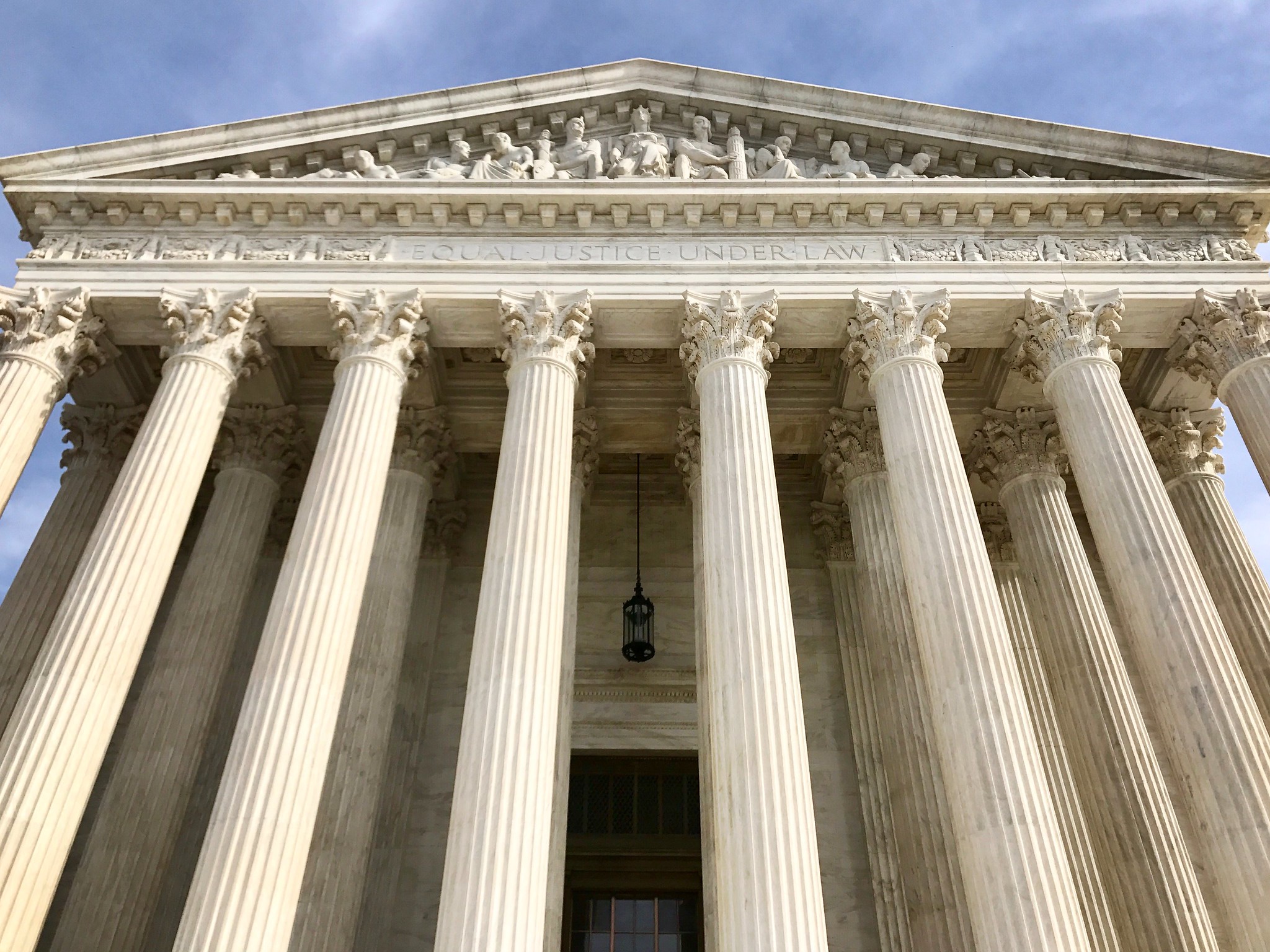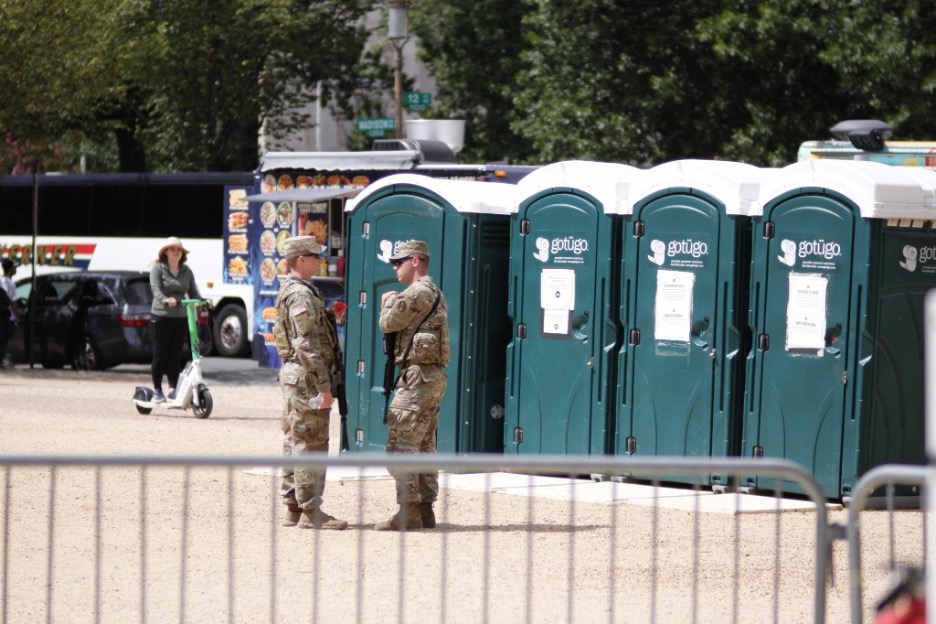Moore v. Harper Explained

Published by The Lawfare Institute
in Cooperation With

In Moore v. Harper, a six-justice Supreme Court majority largely rejected the “independent state legislature” theory, which would have curtailed state courts’ ability to constrain state legislatures in the context of congressional elections. In an opinion by Chief Justice John Roberts, the Court ruled against leaders of the North Carolina General Assembly, whose gerrymandered post-2020 districting plans were initially struck down in state court. Rejecting the legislature’s challenge to state judicial authority, the U.S. Supreme Court held that the U.S. Constitution’s Elections Clause, which allows state legislatures to regulate the “Times, Places and Manner” of federal Senate and House elections, “does not insulate state legislatures from the ordinary exercise of state judicial review.” The majority reached this decision even though the North Carolina Supreme Court reversed itself and invalidated the state ruling the U.S. Supreme Court was reviewing.
Moore v. Harper resolves an issue that has lingered since Bush v. Gore and ensures that state legislatures will not lawfully be able to enact laws governing federal elections without them being subject to state judicial review, including for compliance with state constitutions. In doing so, the Court has rejected a theory that was—in its most extreme version—central to some of former President Trump’s arguments to overturn the results of the 2020 presidential election. It has also foreclosed the possibility that this theory—as applied to the Constitution’s Electors Clause—could be the basis of successful challenges in 2024.
Factual and Procedural Background
The U.S. Supreme Court case centered on the legislative defendants’ effort to reverse a North Carolina Supreme Court decision (Harper I) striking down gerrymandered congressional, state senate, and state house maps. The legislative defendants’ argument rested on their interpretation of the Elections Clause of the federal Constitution, which states that “The Times, Places, and Manner of holding Elections for Senators and Representatives, shall be prescribed in each State by the Legislature thereof.” In the legislative defendants’ view, this provision allows only state legislatures to set election rules for congressional elections, with no “role in this policymaking process [for] state judges.”
This reading of the Elections Clause, the independent state legislature theory, threatened to spark unchecked gerrymandering by state-level politicians across the country. In Rucho v. Common Cause (2019), Chief Justice Roberts, writing for a five-justice majority, announced that partisan gerrymandering claims are nonjusticiable—or can’t be resolved—in federal courts. After Rucho, state courts remained the only forum for review of state districting maps on partisan gerrymandering grounds. If the independent state legislature theory had been accepted by the Supreme Court, courts’ ability to review partisan gerrymandering claims at all would have been severely curtailed.
More broadly, under the most extreme versions of the theory, all state legislatures would be unchecked in managing elections however they wish as long as they don’t violate federal law. By many accounts, this would severely threaten the integrity of American democracy, as state courts are a crucial defense mechanism against possible efforts by state legislatures to consolidate power by manipulating election administration. In recent years, legislatures have conducted unnecessary audits, ratcheted up voting-related criminal penalties, established election police forces, seized authority from local election officials, and sought to make it more difficult for democratic majorities to amend state constitutions. While not all of these measures can be curtailed by state courts, state-level litigation and judicial review are integral to voting rights protection efforts nationwide.
State Court Litigation
The Moore saga began when a group of North Carolina plaintiffs, including individuals and advocacy organizations, sued leaders of the North Carolina General Assembly for drawing federal and state district lines that plaintiffs argued were unconstitutional party-based gerrymanders prohibited by North Carolina’s constitution. The plaintiffs relied on the state constitution’s guarantee that “[a]ll elections shall be free,” as well as its sections providing equal protection and protecting free speech and free assembly.
At the beginning of what the U.S. Supreme Court would eventually label Harper I, a state trial court found that the congressional map passed by the General Assembly in 2021 was “intentionally and carefully designed to maximize Republican advantage,” but the court refused to award relief, holding that the plaintiffs’ claims were political questions a court could not resolve. The North Carolina Supreme Court reversed and invalidated the skewed maps, finding plaintiffs’ claims justiciable and concluding that the maps “substantially infringe[d] upon plaintiffs’ fundamental right to equal voting power.” The state’s high court rejected the independent state legislature theory and noted that Rucho did not preclude state courts from invaliding gerrymandered maps under state law.
Afterward, the North Carolina Supreme Court sent the case back down to the lower state court for remedial proceedings. In February 2022, the legislative defendants requested that the U.S. Supreme Court stay the state supreme court decision on the emergency docket (commonly called the “shadow docket”), as it did with federal district court rulings in voting rights cases in Alabama and Louisiana. While the Roberts Court did not grant emergency relief, it did take up Moore v. Harper on its regular merits docket.
In the November 2022 election, Republicans won a 5-2 majority on the North Carolina Supreme Court, seizing control from the 4-3 Democratic majority that decided Harper I. Soon afterward, the North Carolina Supreme Court overruled Harper I, invoking Rucho to conclude that partisan gerrymandering claims are not justiciable under North Carolina law. Despite its about-face, the state court did not reinstate the 2021 congressional map invalidated by Harper I, opting instead to let the state legislature create a new redistricting plan. Nor did the court explicitly address the Harper I court’s rejection of the independent state legislature theory.
Justiciability Ruling
The abrupt state-level U-turn—which happened after the U.S. Supreme Court heard oral argument—created a dilemma for the justices in D.C., who ordered two rounds of supplemental briefing on the subject from the parties and the solicitor general. The Constitution allows federal courts to decide only live “cases” and “controversies,” and “there must exist a dispute at all stages of review,” or else a case is moot. To determine if Moore was now moot, the justices had to decide whether the invalidation of Harper I deprived the plaintiffs challenging that decision of “a personal stake in the outcome” of the U.S. Supreme Court case.
For two reasons, the majority held that Moore was not moot and could be decided on the merits. First, it concluded, the North Carolina Supreme Court only overruled Harper I’s reasoning and did not “disturb” the injunction against implementation of the gerrymandered 2021 maps. Because of this, the Court reasoned that the legislative defendants’ “path to complete relief” (the restoration of the 2021 maps) “runs through this Court,” and the parties therefore retained a “personal stake” in the case.
Second, the Court held that it could review Harper I under 28 U.S.C. § 1257(a), a statute that allows the U.S. Supreme Court to review “final judgments or decrees rendered by the highest court of a State” when federal questions are at stake. According to the Moore majority, Harper I “finally decided” the federal issue of whether the Constitution’s Elections Clause bars state court review of legislative actions in the elections context, even though state proceedings continued. Because the North Carolina Supreme Court declined to reverse this final Elections Clause holding or green-light the invalidated 2021 maps, the holding “survived” the state-level reversal, bound the parties, and was reviewable.
Majority Ruling on the Merits
The U.S. Supreme Court decisively rejected the North Carolina General Assembly’s argument that only state legislatures can “set the rules regarding federal elections.” Chief Justice Roberts, writing for the six-justice majority, held that both the federal Constitution and state constitutions bind state legislatures when they regulate federal elections. Still, state courts “do not have free rein” and must remain within “the ordinary bounds of judicial review,” though the majority declined to decide whether the North Carolina Supreme Court exceeded these limits.
First, the Court described the rich history of state-level judicial review at the founding. “Courts in at least seven states invalidated state or local laws under their State constitutions before 1787,” the majority found. In one case, Trevett v. Weeden (1786), the Rhode Island Supreme Court held unconstitutional a state statute that created criminal penalties but did not include a right to a jury trial. And in Bayard v. Singleton (1785), the North Carolina Supreme Court invalidated a state statute barring British loyalists from receiving jury trials when challenging property seizures. The founders, including James Madison and Alexander Hamilton, recognized the importance of state-level judicial review, which underpinned Marbury v. Madison, the foundational 1803 case affirming the federal judiciary’s power to invalidate unconstitutional laws. And at least two state constitutions from the founding era constrained state legislatures’ election regulations.
The majority then looked to the U.S. Supreme Court’s own precedent. In Ohio ex rel. Davis v. Hildebrant (1916), the Court affirmed an Ohio Supreme Court decision holding that district maps enacted by the state legislature could be invalidated by popular vote under a state constitutional provision then in place. And Smiley v. Holm (1932) saw the U.S. Supreme Court reverse a Minnesota Supreme Court ruling that the state legislature had “‘the exclusive right to redistrict’ such that its actions were ‘beyond the reach of the judiciary.’” The majority also invoked a much more recent case, Arizona State Legislature v. Arizona Independent Redistricting Commission (2015), which allowed Arizonans to place redistricting in the hands of an independent commission and acknowledged (in the Moore Court’s words) “that [any] authority ... responsible for redistricting ... remained subject to constraints set forth in the State Constitution.”
The Court held that both the federal Elections Clause and state constitutions constrain state legislatures. “[W]hen legislatures make laws, they are bound by the provisions of the very documents that give them life,” state constitutions. The majority cited McPherson v. Blacker (1892), a case involving the Electors Clause, in which the U.S. Supreme Court held that “the legislative power is the supreme authority except as limited by the constitution of the State,” which can be applied by state courts. In addition, the majority distinguished Leser v. Garnett (1922), where the U.S. Supreme Court held that state constitutions could not prevent legislatures from ratifying the 19th Amendment. Ratification, the Roberts opinion reasoned, was not a “traditional lawmaking” function like election administration, so fewer constitutional constraints applied when states approved the amendment.
Significantly, the majority opinion emphasized that state courts still “do not have free rein.” While they are responsible for applying their own state’s law, state courts may still not craft interpretations that override or “circumvent” federal law. Federal courts may still have a role policing “the ordinary bounds of judicial review,” in order to prevent state courts from supplanting state legislatures in “regulat[ing] federal elections,” a responsibility “deliberately” granted to them by the Constitution.
Justice Kavanaugh’s Concurrence
In his concurrence, Justice Brett Kavanaugh agreed with the majority’s conclusion that state laws are still subject to judicial review by state courts, including under state constitutions. He also detailed further how federal courts might ensure that state courts do not take the place of state legislatures in overseeing federal elections.
Kavanaugh’s opinion examined “what standard a federal court should employ to review a state court’s interpretation of state law” when that interpretation might implicate the U.S. Constitution’s Elections Clause. Kavanaugh named three alternatives but ultimately preferred a test offered by Chief Justice William Rehnquist in Bush v. Gore (2000). In his concurrence, Rehnquist proposed that federal courts intervene if “state courts ‘impermissibly distorted’ state law ‘beyond what a fair reading required.’” Kavanaugh also noted potential standards offered by Justice David Souter (“limits of reasonable interpretation”) in his Bush v. Gore dissent—and by the solicitor general (“truly aberrant interpretation”) in the United States’ brief for Moore v. Harper.
Ultimately, Kavanaugh concluded that “all three standards convey essentially the same point” about how federal courts review state courts’ decisions implicating the Elections Clause: that “[f]ederal court review ... should be deferential, but ... not an abdication.” In addition, even as he outlined his preference for the “straightforward” Rehnquist standard, Kavanaugh noted that the Court did not fully resolve how to apply this test in Moore. In a future case, Kavanaugh suggested, the Court will need to name “a more specific standard.”
Justice Thomas’s Dissent
Justice Clarence Thomas would have dismissed the case as moot, and he rejected the majority’s conclusions on the merits. His dissenting opinion sharply criticized the majority for deciding a case with “no live claim for relief,” which “is emphatically not [the Court’s] job.”
In Thomas’ view, the federal issue—the scope of the Elections Clause—did not survive. Because Harper I was overruled, “this case is over,” and the state legislature won. And since the legislature won on state law, rather than the alternative Elections Clause claim, the federal claim “no longer requires decision.” The majority’s holding that the state supreme court left Harper I’s decision on the Elections Clause intact “is both irrelevant,” because the state case had concluded, and “incorrect,” because Harper I was “completely negated,” according to Thomas.
Although Thomas admitted he “would gladly stop” with the justiciability analysis, he proceeded to discuss his view of the independent state legislature theory. In doing so, he was joined only by Justice Neil Gorsuch, as Justice Samuel Alito joined only the justiciability portion of Thomas’s dissent. Thomas established three premises for his conclusion. First, the people of a state may not “limit powers ‘given by the people of the United States’ as a whole.” Second, the Constitution “delegated” to states the power to determine the “Times, Places and Manner” of congressional elections, which “is no original prerogative of state power.” Third, “the Legislature thereof” does not refer to the people of a state. Instead, a legislature is “that body of persons within a state clothed with authority to make the laws.” It must follow, Thomas then reasoned, that the people of a state cannot use judge-applied state law to limit the state’s constitutionally granted lawmaking power to regulate congressional elections. While the majority rejected this ultimate conclusion, Thomas argued that it did not actually reject any of the three underlying premises.
Thomas ended his dissent by concluding, in another section joined only by Gorsuch, that the majority opinion “portends serious troubles ahead for the Judiciary.” The majority opinion has “open[ed] a new field for Bush[ v. Gore]-style controversies” by letting state courts apply state constitutional provisions to the administration of federal elections but allowing federal courts to step in if state decisions exceed “the bounds of ordinary judicial review.” Because these “bounds” are ill defined, Thomas fears that federal dockets will “swell” with state constitutional claims, and the least dangerous branch may decide the winners of federal elections.
Though it’s not clear how exactly federal courts will review state court judgments implicating the federal Elections Clause after Moore, at least six justices—from across the ideological spectrum—rejected the strongest versions of the independent state legislature theory.





.jpg?sfvrsn=8253205e_5)
